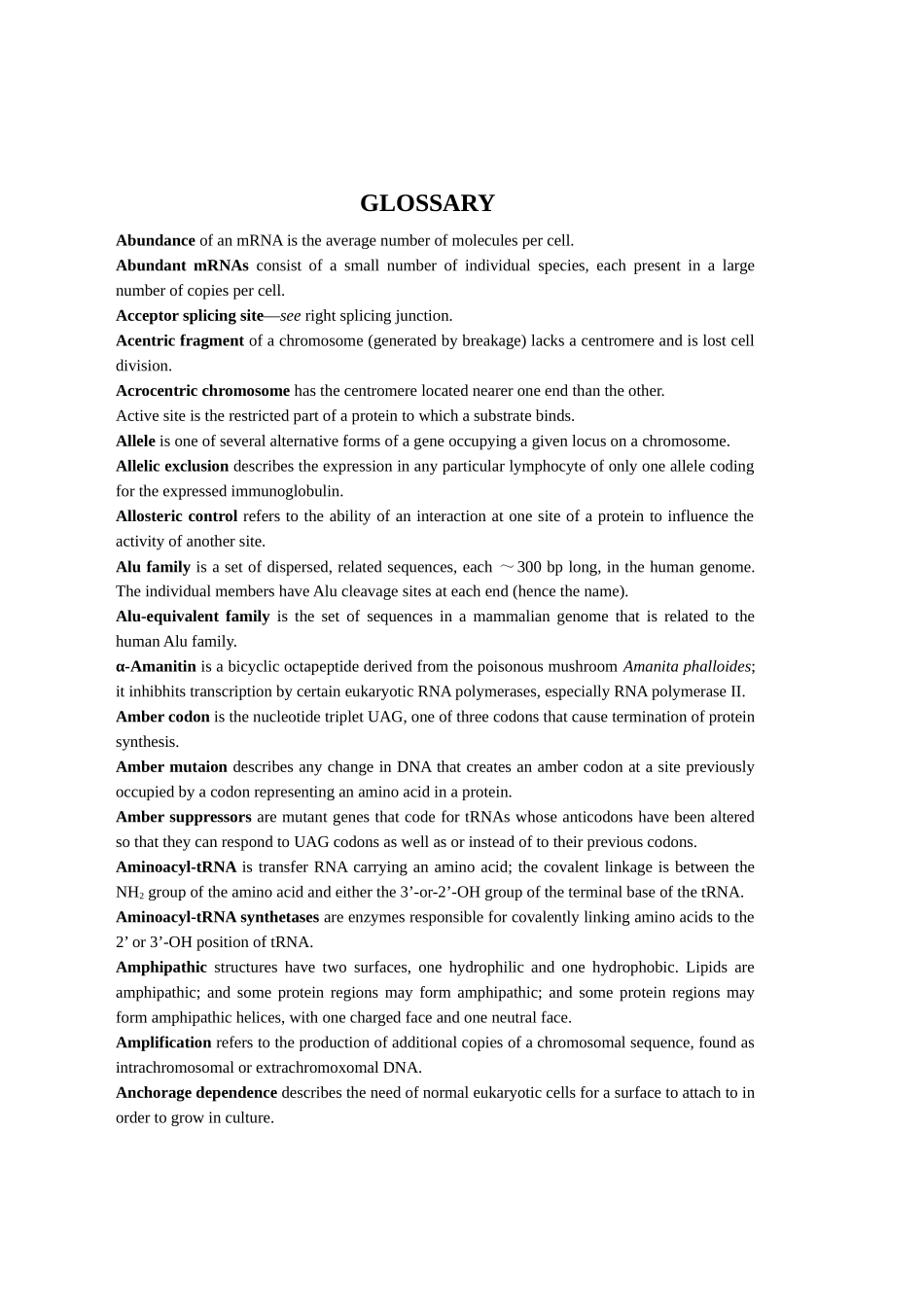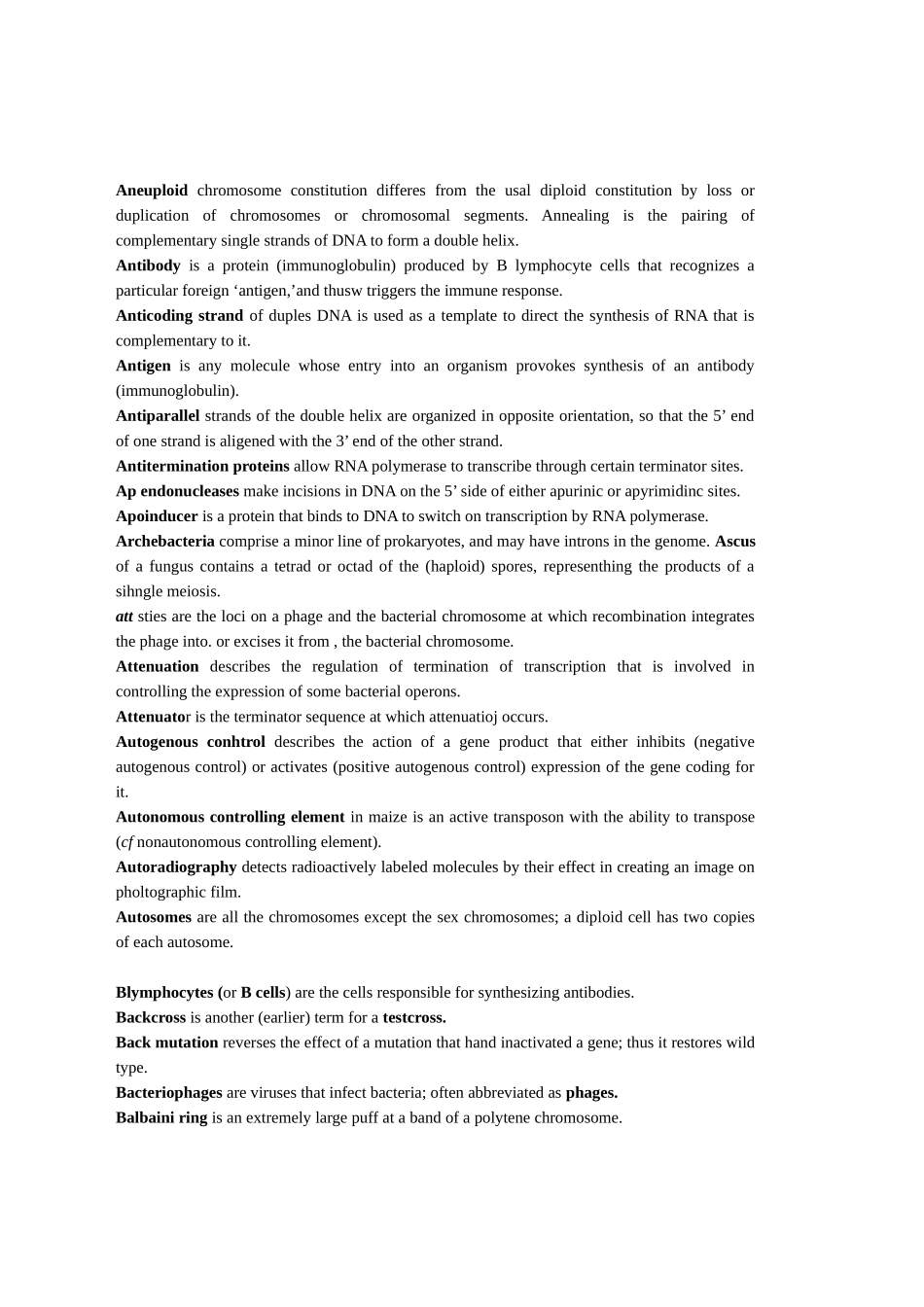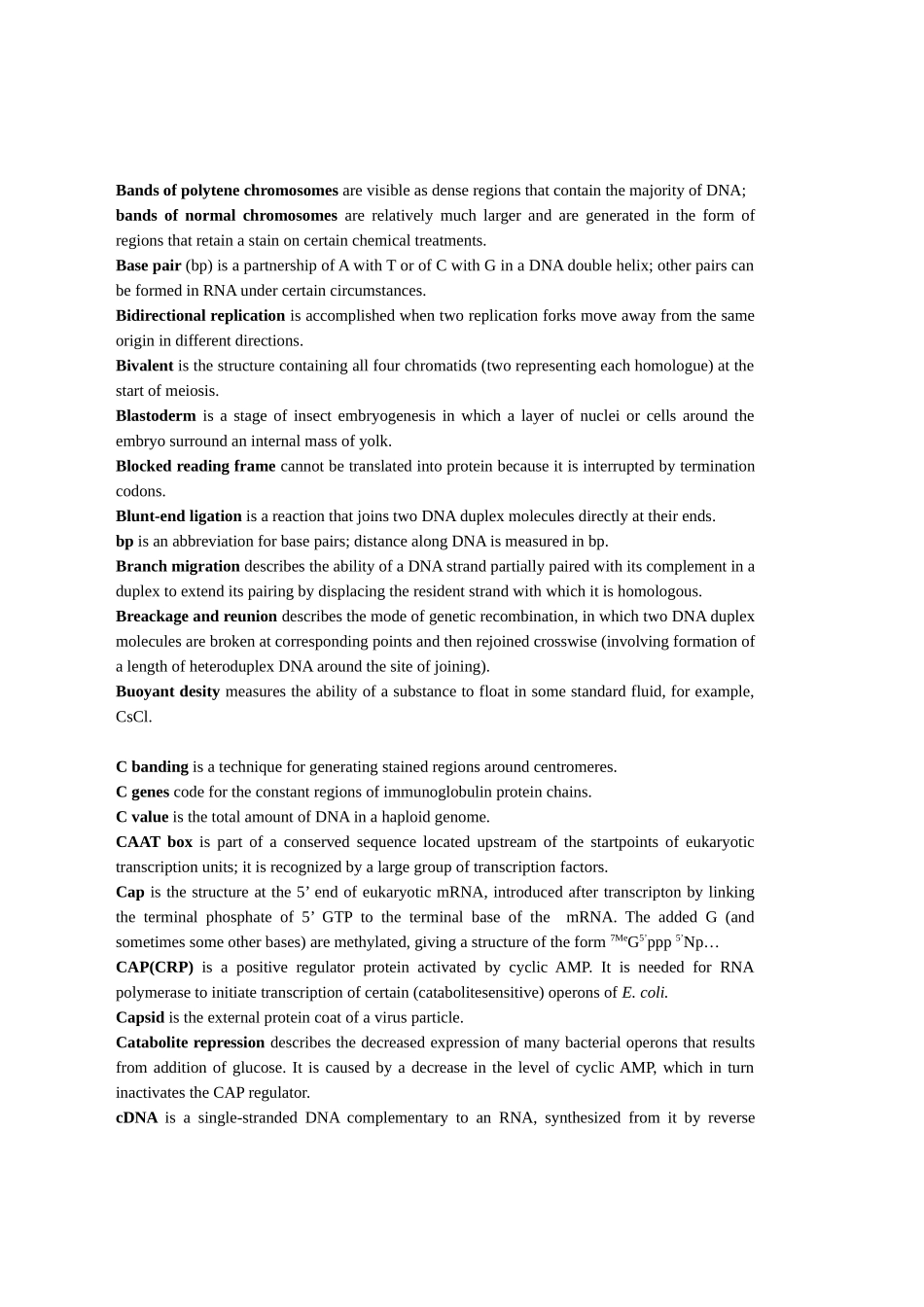GLOSSARYAbundance of an mRNA is the average number of molecules per cell.Abundant mRNAs consist of a small number of individual species, each present in a large number of copies per cell.Acceptor splicing site—see right splicing junction.Acentric fragment of a chromosome (generated by breakage) lacks a centromere and is lost cell division.Acrocentric chromosome has the centromere located nearer one end than the other.Active site is the restricted part of a protein to which a substrate binds.Allele is one of several alternative forms of a gene occupying a given locus on a chromosome.Allelic exclusion describes the expression in any particular lymphocyte of only one allele coding for the expressed immunoglobulin.Allosteric control refers to the ability of an interaction at one site of a protein to influence the activity of another site.Alu family is a set of dispersed, related sequences, each ~300 bp long, in the human genome. The individual members have Alu cleavage sites at each end (hence the name).Alu-equivalent family is the set of sequences in a mammalian genome that is related to the human Alu family.α-Amanitin is a bicyclic octapeptide derived from the poisonous mushroom Amanita phalloides; it inhibhits transcription by certain eukaryotic RNA polymerases, especially RNA polymerase II.Amber codon is the nucleotide triplet UAG, one of three codons that cause termination of protein synthesis.Amber mutaion describes any change in DNA that creates an amber codon at a site previously occupied by a codon representing an amino acid in a protein.Amber suppressors are mutant genes that code for tRNAs whose anticodons have been altered so that they can respond to UAG codons as well as or instead of to...


